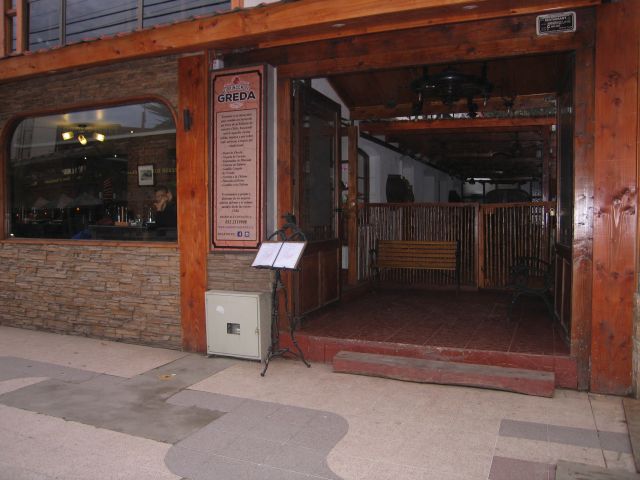Street Smart Spanish by Jeanette Schnall
One of the aspects holding many North Americans and other native English speakers back from living in South America is the language barrier.
Let’s face it. Once you are out of school, your time is taken up by your job, family and just regular bookkeeping and household chores. And if you’re on our wavelength you’re cramming your day with research on how to escape the ongoing economic crisis and collapse of western civilization…no small matter.
So learning Spanish is right up there with going to the dentist and doing hand wash with Woolite.
If you enroll in a class, unless you are lucky enough to find an excellent and unusual teacher and teaching method, you’ll spend the first three months of the class de-clenching irregular verbs—or maybe that’s your teeth—getting mired in a mazeof verb endings and hours of homework, studying grammar rules.
Oh please! Enough torture. Trust me. I know. I spent my first three years in college studying Mandarin Chinese. And, for example, here are two sample sentences from my level one Chinese language book.
“I’m thinking of studying Chinese or American Literature.”
And here’s the sentence that tells it all, “In studying Chinese, Mr. King is good in every aspect of pronunciation, sentences and grammar.”
I can laugh now, but I can tell you it was basically a waste of time. On my first day in Taiwan I realized I didn’t even know how to ask where the bathroom was! I had spent three years with a bunch of ivory tower professors and I barely learned anything practical. I couldn’t pull people over on the street and discuss literature or grammar with them when I needed to find a toilet or the bus station. In our upper level classes we even learned the vocabulary we needed to discuss communist revolution and concepts of “universal love”. If I didn’t know better (looking back) I might think that they were trying to indoctrinate us.
Do you really think this style of learning will help you order food in a restaurant or ask for directions? No, me neither. So much for experts.
Here’s my suggestion, based on my own experience. Get a copy the following materials.
First, the language guide titled 30 Words: Start the Conversation: South & Central American Spanish Language Guide for Travelers. I bought mine from Magellan’s at
http://www.magellans.com/store/Translators___Language_TranslatorsCL247?Args=
This is a 5 x 4 inch, 10-page, double-sided, fan-fold guide that is made from nearly indestructible material. It is full of only the most highly practical list of words you’ll need to start your gorilla learning methods.
Next is Latin American Spanish (Phrasebook) by Lonely Planet, available at
http://http://www.blogger.com/www.amazon.com/Latin-American-Spanish-Lonely-Phrasebook/dp/1740591704
This book is broken up into logical sections by topics such as, shopping, going out, etc. . . . you get the picture. Within the book are three mini dictionaries: a Spanish to English dictionary, an English to Spanish dictionary, and the third is a separate food dictionary.
Both are small, light and compactly designed to fit in a woman’s handbag or mens jeans pocket. Use these, not only as your textbooks, but carry them as guidebooks, which is their principal feature. You will become quite used to working with them without fumbling around with unfamiliar material in a hurry. Remember, the key in my unorthodox method is to build up as large and practical a vocabulary as possible in the speediest time. Forget about verb usage, declensions and grammar. Your goal is to make yourself understood, try your best to understand the answer you receive, and just get the job done! You might also want to check out the web site at http://www.30words.com/.
You’re not being graded on grammar or pronunciation so feel free to massacre the language. And don’t be shy. The less inhibited you are about it the better you’ll fare. In Chile, unless you are getting professional services such as medical or legal, virtually no one outside of Santiago speaks more than ten words of English so you’re on your own, really. Don’t believe what you read elsewhere. But on the flip side, the people are generally very patient, non-threatening, and treat you with respect, so you don’t feel like a dumb-dumb.
Start with a segment of the book that interests you. It helps to be working on words you like or find useful. I started with the food sections. Go through and just look at the words, without trying to speak them. Familiarize yourself with the vocabulary by sight (the whole word method). It’s easiest to learn to read/recognize Spanish words before attempting speaking and listening comprehension.
Next learn the vocabulary by using a memorizing trick I picked up and customized to use here. My trick to learning Spanish is to look for the “root” (real or imagined) in the word. Use an English word to connect the new Spanish word in your head to a meaningful word in English. We aren’t trying to do a lingual-anthropological study of words. It’s just a gimmick to help us learn faster. So here’s my root sample below:
necesitar (root= necessary) to need
contratar (root=contract) to hire
salir (root=salutations/salute) to leave
encontrar (root=encounter) find
escribir (root=scribble) to write
dormir (root=dorm, dormitory) to sleep
fumar (root= fumes) to smoke
linterna (root=lantern) flashlight
cacerola (root =casserole dish) pot
So there you have it. It’s just an adaptive word association method. By associating the Spanish word to a word in English that is already in your memory, you will make your recall of the translation faster.
Next step, use the anglicized pronunciations given in the book. It’s pretty good. Now go through the Spanish words and read the pronunciations out loud, over and over. This will help to train your ear. Imagine yourself in different situations. Put the book down and try to figure out how you would ask questions. Test your memory of vocabulary and recall. See how you do. Stand in your kitchen and see how many items you can label from memory. Work with your partner or children and quiz each other. Have one read the words and the other give the definitions. And then swap. Have fun. Tease each other. Just keep at it. Don’t expect immediate results, it will take time.
Work in one of the sections of the book until you feel accomplished in that section. Then move to another section. If you have difficulty in one area, skip it for a while and go back to it later. Don’t let it become drudgery. Try to keep it fun and challenging. Try to devote time each day to the task, even if it’s just 20 minutes. Remember that even if you just learn two words a day, by the end of a year you will have a sizable vocabulary.
Eventually, when you get the basics of practical guerilla-communicating down, then consider yourself ready to take a class and start to tackle grammar and verbs. You will be much more motivated because you will already have a base of learning to add to and that will remove a lot of the feeling of drudgery. You will not feel overwhelmed.
Well that’s it and good luck.
Jeanette Schnall
Editor note: After investigating several Latin American countries, Jeanette and her husband, Martin, chose the beautiful southern area of Chile. Jeanette will be using her own hard-earned lessons to help others who are considering relocating to Chile. Her web site is http://www.southernchileproperties.com.
©Fiour Flags Journal 05/21/2010 All rights reserved.



I live in Uruguay and although I could understand Spanish, I had a hard time understanding the Rioplatense variety, with its own accents and vocabulary, and the use of the voseo. One thing that has helped me is to go to YouTube and search for uruguay or argentina (and, optionally, "english subtitles" or "inglés subtítulos"). They're not all gems, but once I found a few good speakers or TV series, I played them all, repeatedly.
— Shirley
I would like to add to Jeanette's excellent article a hint that is a life saver for me.
I completely agree with her advice to work at learning as much vocabulary as possible before paying a lot of attention to grammar, etc. I did exactly that and found that, before too long, I could say almost anything I wanted. I might be murdering the king's English but at least people understood me.
But surprise, surprise! I found out I had a problem. They could understand me, but I could not understand them. When they started speaking, even in answer to a question, I was lost–completely. How strange it must have seemed—and frustrating—to have this American woman who appeared to speak castellano but who understood almost nada! I would try to get them to slow down and usually it was useless—they would just repeat the same thing.
My method to learn Spanish was a used college textbook, Mosaicos, Spanish as a World Language which I bought from Alibris, http://www.alibris.com, for $4.00 plus shipping. And memorized vocabulary as Jeanette (and others) recommend.
Here is my life saver. I discovered that the publisher has an entire web site in support of the book. It is at http://wps.prenhall.com/ml_castells_mosaicosCW_5/, if you want to check it out.
I started listening to the Spanish for whatever lesson I am in. I am still in the process. I work very hard to understand what they are saying in the audio. It is getting easier. The great thing is I can stop it any time and go back and hear it again, pause, look up words I don't understand–and it is working! Sometimes it sounds like they are using words I don’t even know—but often it just turns out to be the way they pronounce them.
Here is another hint. As Jeanette says, take your time, it will not happen overnight. But it will happen. And after it does, it will be behind you and you will have that wonderful sense of accomplishment! My rule is to set aside a certain amount of time every day and just DO IT. Even on days when it seems hard (and there are some) and you are not getting anywhere, just keep plugging away. You are accomplishing more than you think. If you do that every day, no pressure, no rush, you will get there.
And let us know how you are doing. We encourage you to post comments. For you veteran expats, please feel free to contribute additional hints. They will help us all.
Arlean